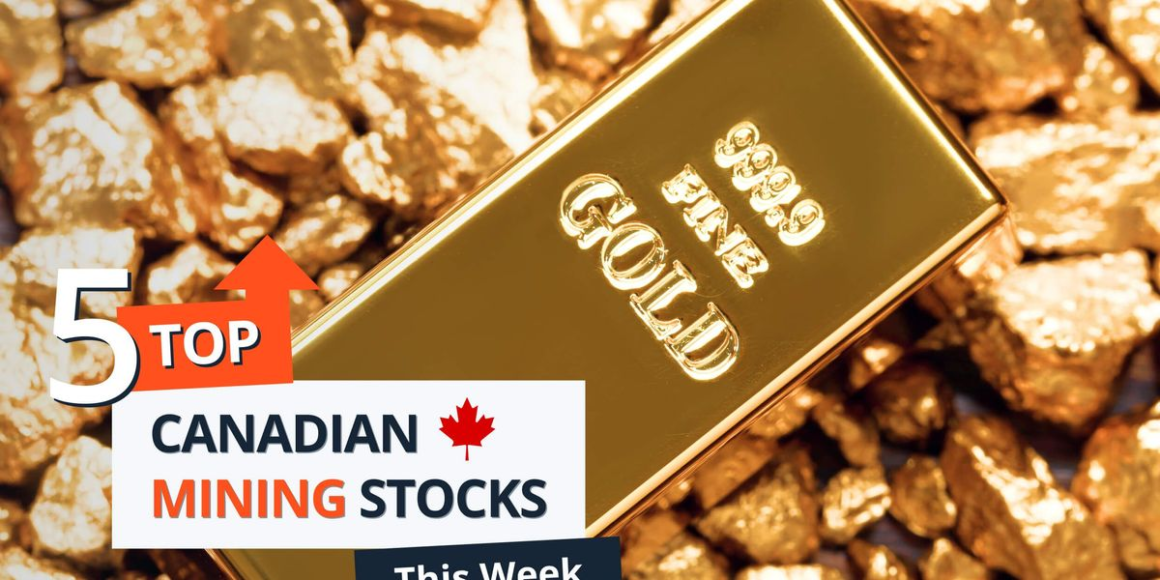The slowing pace of inflation is largely attributable to lower costs at the pumps, with gasoline prices falling 10.7 percent on a yearly basis, which follows a 5.1 percent decline in prices in August. However, the deceleration was offset by an 8.2 percent rise in rent and 2.4 percent increase in food.
Its recent strong performance is owed to a shift in the US Federal Reserve policy following a 50 point cut at its September meeting.
Despite the rise in the US dollar, gold set new record highs during Friday’s trading session climbing to US$2,721.27 per ounce at 4:30 p.m. EDT to end the week up by 2.42 percent. Silver also saw strong momentum as it surged 6.88 percent on the week to US$33.67 per ounce.
Against that backdrop, how did TSX- and TSXV-listed resource stocks perform? Here are the top five best-performing Canadian resource stocks this week.
Weekly gain: 75.51 percent
Market cap: C$33.52 million
Share price: C$0.43
Cerrado Gold is a junior gold production and development company focused on its assets in South America, including two producing mines in Santa Cruz, Argentina.
Its flagship Minera Don Nicolas mine consists of a 333,400 hectare concession package and has been in operation since 2018. Mining feed is derived from the La Paloma and Martinetas open pits and processed at the centralized carbon-in-leach gold plant, which has a capacity of 1,000 metric tons per day.
The PEA demonstrates an after-tax net present value of US$111 million at a gold price of US$2,100 per ounce, and estimates a mine life of five years, with an annual production target of 56,000 ounces of gold equivalent per year.
Weekly gain: 56.67 percent
Market cap: C$14.38 million
Share price: C$0.235
Metallis Resources is an exploration company that has spent much of 2024 advancing work at its Greyhound property in Central Idaho, US.
Weekly gain: 50 percent
Market cap: C$18.84 million
Share price: C$0.015
Gabriel Resources is a precious metals explorer and developer focused on advancing its Rosia Montana gold project. Based in Transylvania, Romania, Rosia Montana is in a region that has seen significant historic mining. Covering 2,388 hectares, the site is host to a mid-to-shallow epithermal system containing deposits of gold and silver.
Gabriel has invested more than US$760 million into Rosia Montana, but has undertaken little development at the site since the early 2010s, as Romania blocked further development.
Weekly gain: 46.67 percent
Market cap: C$13.11 million
Share price: C$0.11
Northern Graphite is a production and development company and the only producer of flake graphite in North America.
Additionally, the company said it is working on operational scenarios to begin operation at a new open pit by the end of 2024 or early 2025.
Weekly gain: 46.43 percent
Market cap: C$25.6 million
Share price: C$0.205
1911 Gold is a gold exploration company working to advance its Rice Lake properties in Eastern Manitoba.
The properties cover more than 58,000 hectares along the Rice Lake greenstone belt in an area that has been explored since gold was discovered in 1911. The exploration properties include two prospective claim blocks, Rice Lake and Central Manitoba, and host the past-producing True North, Central Manitoba, Gunnar and Ogama-Rockland mines.
1911 said the targets show significant potential for high-grade gold and can be easily upgraded to mineral resources due to close proximity to existing infrastructure and historic underground mine workings.
The TSX, or Toronto Stock Exchange, is used by senior companies with larger market caps, and the TSXV, or TSX Venture Exchange, is used by smaller-cap companies. Companies listed on the TSXV can graduate to the senior exchange.
The exchange lists a handful of other fees and expenses companies can expect, including but not limited to security commission and transfer agency fees, investor relations costs and director and officer liability insurance.
These are all just for the initial listing, of course. There are ongoing expenses once companies are trading, such as sustaining fees and additional listing fees, plus the costs associated with filing regular reports.
Investors can trade on the TSXV the way they would trade stocks on any exchange. This means they can use a stock broker or an individual investment account to buy and sell shares of TSXV-listed companies during the exchange’s trading hours.
Article by Dean Belder; FAQs by Lauren Kelly.
Securities Disclosure: I, Dean Belder, hold no direct investment interest in any company mentioned in this article.
Securities Disclosure: I, Lauren Kelly, hold no direct investment interest in any company mentioned in this article.


Leave a Reply